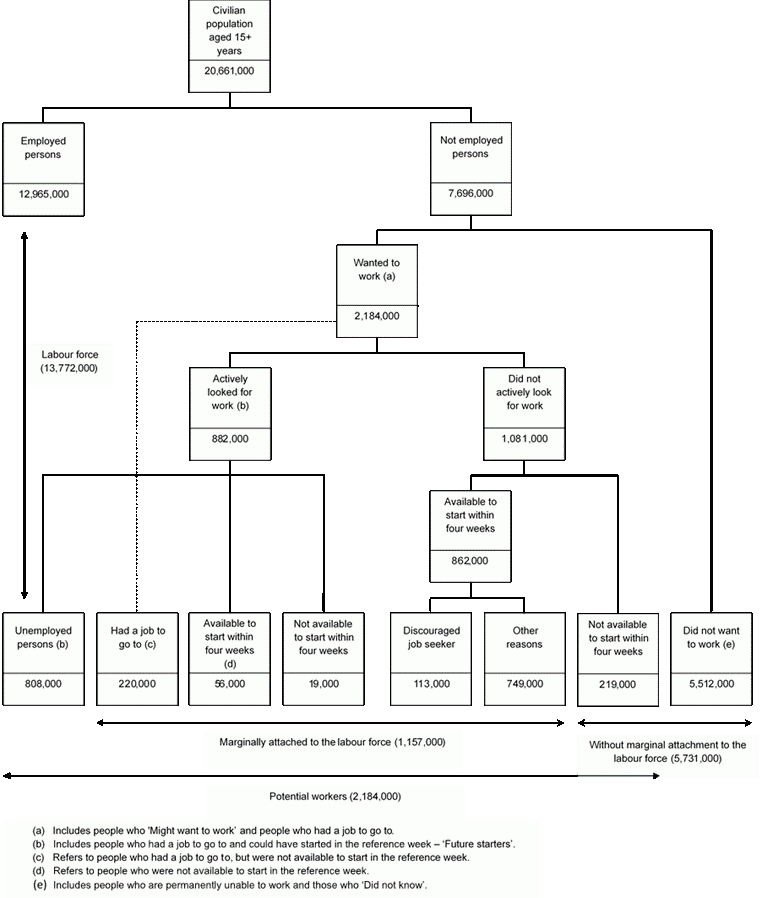Chart 2: Potential workers, Original
[["Feb-15","Feb-16","Feb-17","Feb-18","Feb-19","Feb-20","Feb-21"],[[761.6],[719],[750.2],[736.4],[671.8],[703.9],[807.6]],[[929.4],[881.6],[945.6],[922.7],[866.3],[922.3],[1028]],[[980.3],[939.9],[1000.7],[976.9],[930.5],[985.5],[1102.8]],[[1410.3],[1348],[1386.5],[1363.7],[1265.6],[1282.5],[1381.5]],[[1822.3],[1752.6],[1804.1],[1772.5],[1685.8],[1765.1],[1866]],[[2114.9],[2048],[2095.7],[2086.6],[1975.1],[2068.9],[2175.4]]]
[]
[{"axis_id":"0","tick_interval":"","axis_min":"","axis_max":"","axis_title":"","precision":-1,"axis_units":"","tooltip_units":"","table_units":"","data_unit_prefix":"","data_unit_suffix":"","reverse_axis":false}][{"value":"0","axis_id":"0","axis_title":"'000","axis_units":"","tooltip_units":"","table_units":"","axis_min":"0","axis_max":null,"tick_interval":null,"precision":"1","data_unit_prefix":"","data_unit_suffix":"","reverse_axis":false}]